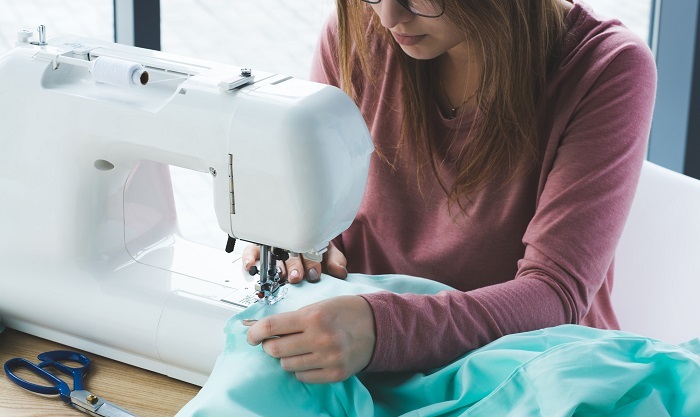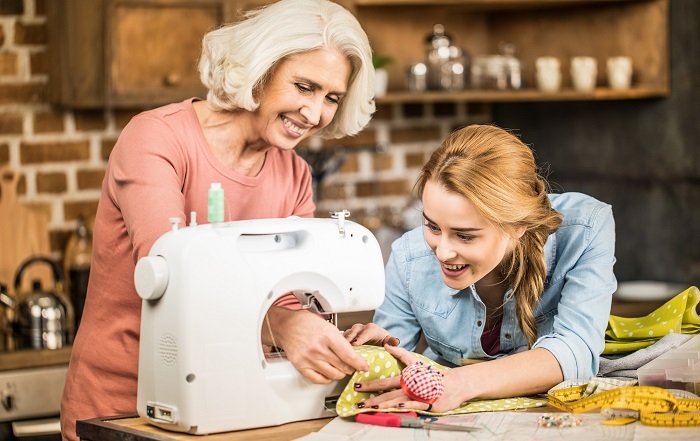

Today, many people learn to sew without hand-sewing every garment, quilt, or hem they touch. The use of sewing machines has instead brought sewing into the modern era. But if you’re going to use a sewing machine, you need to understand how to operate it securely. Although they may not be the most hazardous gadget you have ever used, you should nonetheless use caution.
Major safety rules are
Despite being sound advice in general, this piece of advice is particularly focused on getting a new sewing machine or serger up and running. It’s better to start off using the equipment at a very slow pace and gradually increase it as you feel more comfortable with it. It’s far too simple to get your fingers stuck beneath the needle, or if the machine performs erratically, you could hurt yourself or your project. You also have time to ensure that your machine is threaded properly, the tension is appropriate, and your stitch settings are ideal for the project at hand by starting slowly, preferably on a scrap of fabric.
While pressing or stitching, it can be easy to look away from your task. Just for a moment, to look at the clock, respond to that text, or make sure the kids are all OK. Not at all. Put the iron down or release your foot from the pedal if you need to look away. Distracted stitching has the same negative consequences as distracted driving!

It’s not just possible to burn yourself on the iron or catch your hand in the sewing machine; it’s also very simple to mess up your creation.
As sewers, we need to make modifications to our sewing machines on a regular basis, whether it’s adding accessories, swapping out needles or presser feet, or even just performing routine maintenance. Always disconnect the device before performing any of those actions. It’s simple to overlook this step, but if you do, you run the risk of suffering a major injury. The iron or steamer needs to be unplugged even more. Professional tailoring shops use irons that are connected to lights that stay on until it is safe for the iron to go.
It can be about as effective to use the wrong kind of needle for your material as it is to eat a steak with a spoon. Check out this helpful information if you’re unsure about the kind of needle you require. Before beginning, it’s also crucial to confirm that your computer’s settings are accurate. Otherwise, you risk damaging your tools, your project, breaking needles, injuring yourself, and ruining your equipment.
We have just as much sharp-edged equipment in the sewing room—seam rippers and shears, thread nippers, and rotary cutters—but we frequently neglect to treat them with the same regard. Keep your scissors pointed down, unopened, in a large cup or jar. The underside of the object has a little cushion that protects the scissors’ cutting edges. Even if you intend to use your rotary cutters again soon, always close them after use.

An accident is just waiting to happen with a broken sewing machine or dull pair of scissors. Keep your equipment in top shape to do yourself and your projects a
When people think of sewing safety, they frequently picture threatening sewing machines with sharp edges and stabbing needles, but steamers and irons can cause a lot of injuries. When pressing, ironing, and steaming your work, exercise caution at all times. Keep in mind that freshly pressed materials and ironing surfaces can be almost as hot as the iron itself.
Long or scratchy nails can get caught in your sewing machine or catch on delicate fabrics. To prevent any unforeseen mishaps, it is best to keep them short. Make sure your sewing area is comfortable for you to work in if you plan to sew for a long time. Ample lighting helps you minimise eye strain, and appropriately sized furniture can help you avoid back and neck pain from hunching over your work.
Kids can enjoy sewing as a hobby, but they should learn the craft gradually. Begin teaching them to sew by hand, and watch them closely while they’re working.
It’s not intended to be stressful to sew. When a project you’re working on isn’t going as you had hoped, take a break, go for a walk, or do anything else you need to do to avoid getting frustrated. If you persist, there’s a good chance you’ll make the situation worse and perhaps even make a costly error.

An occasional break not only prevents you from losing patience with your work, but it also allows you to stretch, refocus, and find new inspiration.
To keep yourself safe while servicing your sewing machine, pay close attention to what you’re doing. If you’re not, it’s simple for an accident to occur, like a straightforward slip of the hand. Use a sewing machine only when you can concentrate on what you are doing to prevent this. Sewing machines frequently cause unpleasant surprises. Machine power cords can deteriorate over time, and areas with exposed wires are extremely dangerous.
Therefore, before beginning any repairs, one should make sure the machine is turned off and unplugged because the last thing you want is to have your hand inside the machine when it starts to cut. There are numerous other safety rules that must be followed. It is beneficial to take some tips from professionals and follow them. As it can help to increase rationality and sharpen one’s knowledge.